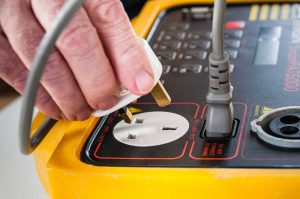What is a PAT test? is a question we get asked ALL THE TIME. But, when we do get asked questions like these, we always try and take the time to understand exactly what our clients really want to know about PAT Testing. Often they will only ask what it is, when in reality they are interested in the legal requirements when it comes to testing. This handy little guide should provide you with answers to those unanswered questions you may have…
 What is a PAT Test?
What is a PAT Test?
A PAT test is a routine inspection of some types of electrical appliance to check that they are safe for use.
What does the ‘PAT’ stand for?
Portable Appliance Testing. There is no definition of what a “portable appliance” is in current legislation, so the word ‘portable’ can often be misleading.
Is PAT testing a legal obligation?
In short, NO; the testing itself is not a legal obligation. However, current UK legislation states that businesses must maintain electrical equipment in a safe condition. They also have a legal responsibility to ensure the safety of employees and the public.
Are there penalties if I don’t meet my legal obligations?
Depending on the severity of the situation, the penalty for not meeting legal obligations on electrical appliance safety can be up to 2 years imprisonment as well as an unlimited financial penalty.
Who is responsible for electrical appliance safety?
The Employer. In larger business, an employer often appoints a ‘competent person’ to take on the role.
How often should items be PAT tested?
There are no specific rules for the frequency of PAT tests. However, things like the risk level of the working environment can determine this.
How do I know if my business is high, medium or low risk?
There are 3 main factors that are considered when assessing the electrical risk of a business; the risk level of the equipment, the type of equipment used, and who will be interacting with the equipment.
Can my business carry out its own PAT testing?
YES; as long as the person doing so is ‘competent’. This means knowing how to carry out a PAT test and visual inspection, having adequate knowledge and experience of electricity and electrical work and an understanding of potential hazards and precautions to take when it comes to testing. If you do decide to do your own PAT testing, we would strongly recommend taking a PAT testing course first as it is super important to perform the testing correctly, and most importantly, safely. Feel free to give us a call today and one of our friendly team will be happy to talk you through this and answer any further questions you might have.
You can find out about the rules regarding portable appliance testing and more on what is a PAT test? on the Health & Safety Executive website.
